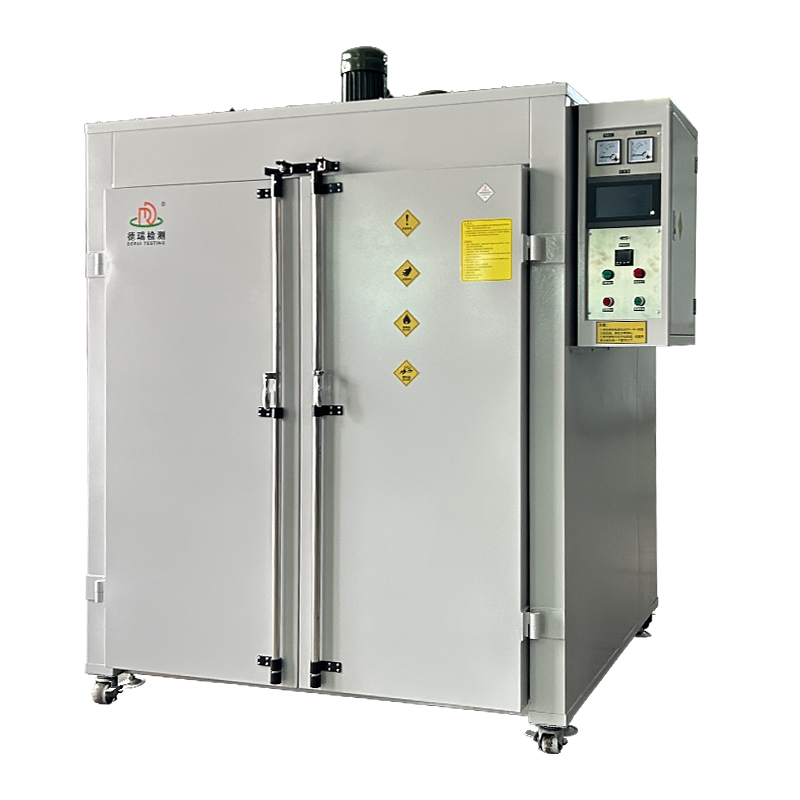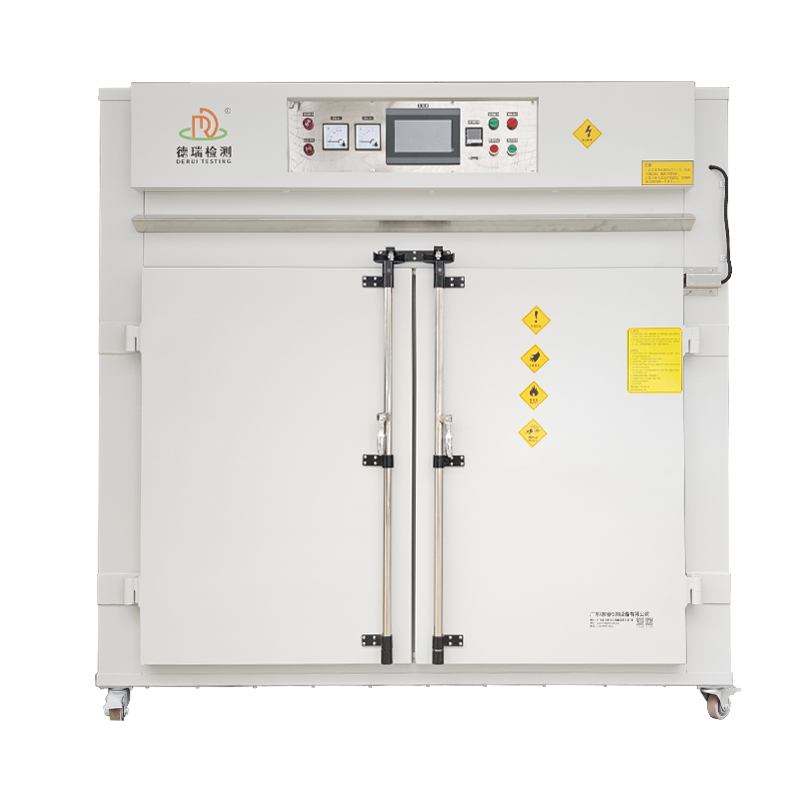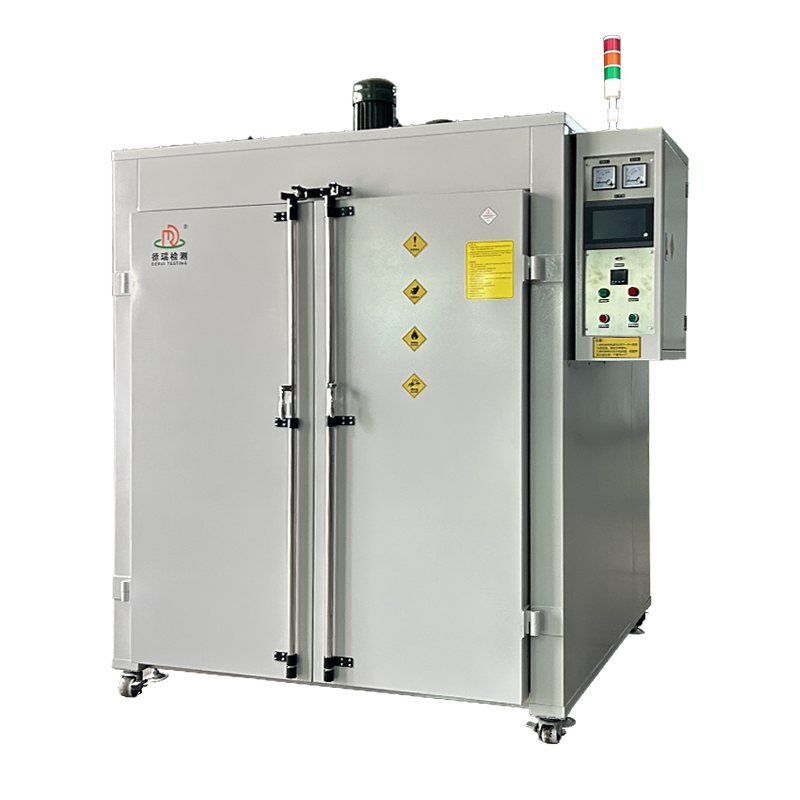Welcome!
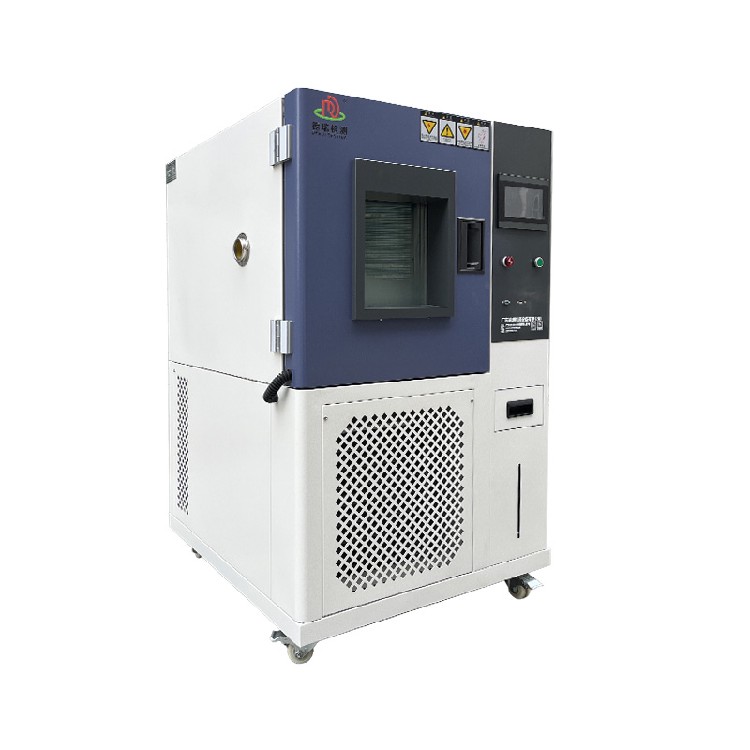


Humidity Control Chamber for Lithium Battery Aging Test & Quality Assurance
Product Description
| Model | DR-H201-100 | DR-H201-150 | DR-H201-225 | DR-H201-408 | DR-H201-1000 | |
| Internal Dimension (W*H*D) | 400*500*500mm | 500*500*600mm | 500*750*600mm | 600*850*800mm | 1000*1000*800mm | |
| External Dimension (sus Type) (W*H*D) | 950*1400*1100mm | 1100*1500*1100mm | 1100*1670*1200mm | 1200*1770*1400mm | 1550*2100*1400mm | |
| External Dimension (paint Type) (W*H*D) | 700*1400*1100mm | 800*1500*1100mm | 800*1670*1200mm | 900*1770*1400mm | 1550*2100*1400mm | |
| Temperature(℃) | -20/-40/-70 | |||||
| Total Power (KW) | 4.5/4.5/6.5 | 5/5/6.5 | 9.5/9.5/11.6 | 9.5/9.5/11.6 | 17/17/21.5 | |
| Maximum Current (A) | 25/25/32 | 32/32/40 | 25/32/40 | 32 | 50/50/60 | |
| Voltage (A) | Sigle Phase 220V | Three Phase 380V | ||||
| Performane | Temp.& Humi. Adjust Way | Balanced temperature and humidity control (BTHC) PID intelligent adjustment | ||||
| Temperature Range | -20℃,-40℃,-70℃~150℃ | |||||
| Temperature Accuracy | 0.01℃ | |||||
| Temperature Tolerance | ≤±1.0℃或±2.0℃ | |||||
| Temperature Fluctuations | ≤±0.5℃ (without load and temperature stable) | |||||
| Temperature Uniformity | ≤1.5℃ (without loading), 50mm≤SENSOR | |||||
| Humidity Range | 20%-98%RH | |||||
| Humidity Accuracy | 0.1%RH | |||||
| Humidity Tolerance | 1 、≥75%RH:≤±3%RH ;2 、≤75%RH :≤±6%RH | |||||
| Humidity Fluctuations | ≤±2.5%RH | |||||
| Heating Rate | 3℃/min in average | |||||
| Cooling Rate | 1℃/min in average | |||||
| Regulator | Cooling Method | Single stage compression, two stage compression | ||||
| Refrigerator | Hermertically Sealed France Tecumseh Compressor or Semi-hermetic BOcK Compressor | |||||
| Cooling Method | Air-cooled | |||||
| Controller | Operation Panel | Programmable LCD Touch Screen | ||||
| Running Mode | Fix Running, Pattern Running | |||||
| Program Memory Capacity | 120 Group Programmable, Max 100 Section Each | |||||
| Output | Rs-232 (USB,Optional) | |||||
| Water Sup | Water Supply | Circulating Water | ||||
| Water Tank Capacity | Chamber Internal Capacity < 800L: 25L X 1pc | |||||
| Chamber Internal Capacity > 800L: 25LX 2pc | ||||||
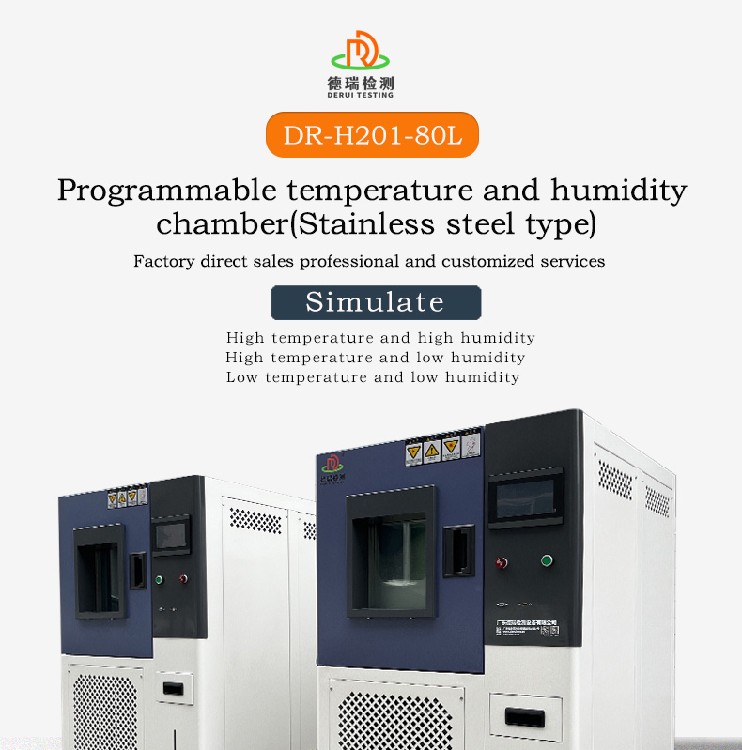
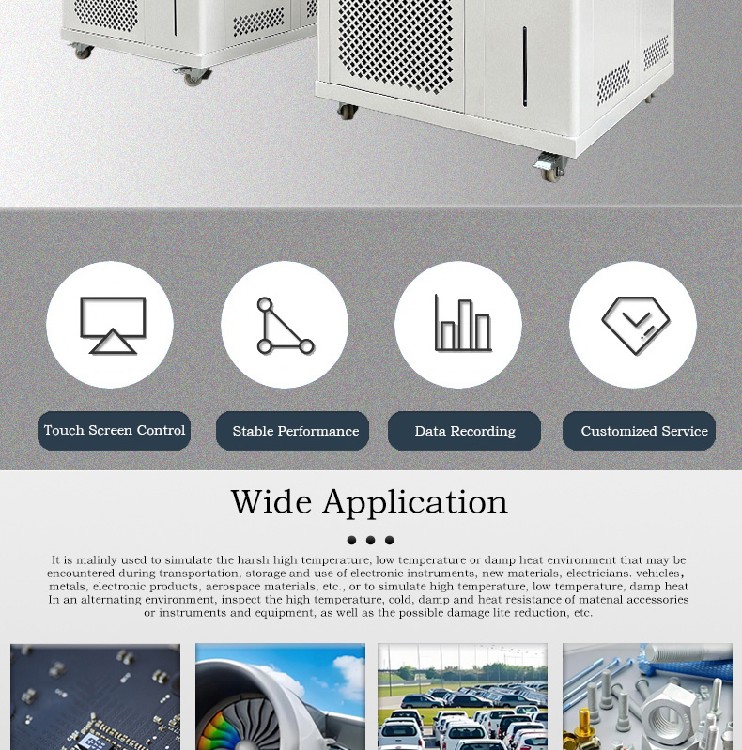

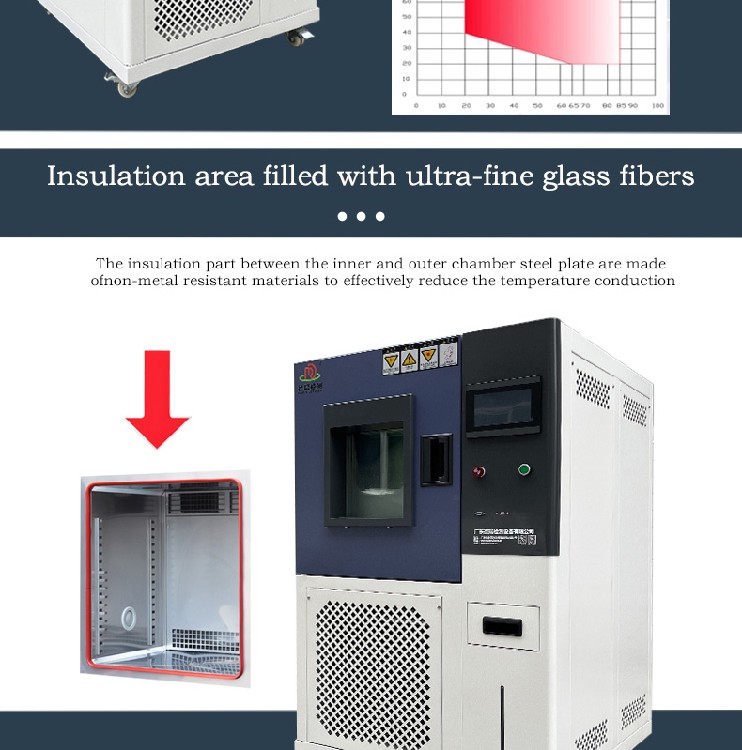
Humidity Control Chamber for Lithium Battery Aging Test & Quality Assurance
In the rapidly evolving field of lithium battery technology, ensuring the reliability and performance of batteries is crucial for a wide range of applications, from consumer electronics to electric vehicles. One key aspect of this is accurate humidity control during battery aging and quality assurance processes. A humidity control chamber specifically designed for lithium battery aging test and quality assurance offers a precise and controlled environment to evaluate and optimize the performance and safety of lithium batteries.
The Importance of Humidity Control in Lithium Battery Testing
1. Impact of Humidity on Battery Performance
Lithium batteries are highly sensitive to environmental factors, and humidity levels can significantly affect their performance and lifespan. High humidity can lead to issues such as corrosion, electrolyte degradation, and capacity fading, while low humidity can cause drying out of the electrolyte and increased internal resistance. By controlling the humidity, testers can accurately simulate real-world conditions and study the effects on battery performance over time.
2. Accelerating Aging Processes
Humidity control chambers can be used to accelerate the aging process of lithium batteries. By exposing batteries to specific humidity and temperature conditions, researchers can simulate years of usage in a shorter period. This allows for quicker assessment of a battery's long-term performance and helps identify potential problems early in the development cycle.
Key Features of a Humidity Control Chamber for Lithium Battery Testing
1. Precise Humidity Regulation
Wide Range: A high-quality chamber should be capable of maintaining a wide range of humidity levels, typically from 10% to 95% relative humidity (RH). This flexibility allows testers to evaluate batteries under various environmental conditions, mimicking different operating scenarios.
Accuracy and Stability: The chamber should provide precise control over humidity levels, with an accuracy of at least ±2% RH. Stable and consistent humidity is essential for accurate testing, as even small variations can affect the results.
2. Temperature Control
Integrated Temperature Regulation: In addition to humidity, temperature plays a crucial role in battery aging. The chamber should have a reliable temperature control system, capable of maintaining a wide temperature range (e.g., -20°C to +60°C) with high accuracy. This allows for comprehensive testing of batteries under different temperature and humidity combinations.
Simultaneous Control: The ability to precisely control both humidity and temperature simultaneously is key. This enables the simulation of complex environmental conditions and ensures that the test results accurately reflect the actual operating conditions of the batteries.
3. Uniform Environment
Air Circulation System: To ensure a uniform distribution of humidity and temperature throughout the chamber, a well-designed air circulation system is essential. This helps eliminate temperature and humidity gradients, providing a consistent environment for all batteries being tested.
Chamber Design: The internal geometry of the chamber should be optimized to promote even airflow and minimize dead zones. This ensures that every battery in the chamber receives the same environmental exposure, leading to more accurate and reproducible test results.
4. Sample Mounting and Accessibility
Versatile Mounting Options: The chamber should offer a variety of sample mounting options to accommodate different types and sizes of lithium batteries. This includes fixtures and holders that can securely hold batteries in place during testing, regardless of their shape or size.
Easy Access: The design should allow for easy insertion and removal of batteries, as well as convenient access for monitoring and measurement during the test process. This simplifies the testing procedure and reduces the time and effort required for sample handling.
5. Data Logging and Monitoring
Real-Time Data Acquisition: A sophisticated data logging system is crucial for tracking and analyzing the performance of lithium batteries during the aging test. The chamber should be equipped with sensors to measure and record parameters such as humidity, temperature, voltage, current, and capacity in real-time.
Remote Monitoring: In addition to local monitoring, the ability to remotely access and monitor the test data is a valuable feature. This allows researchers to keep track of the test progress and make adjustments as needed, even when they are not in the immediate vicinity of the chamber.
Applications in Lithium Battery Aging and Quality Assurance
1. Performance Evaluation
Humidity control chambers are used to evaluate the performance of lithium batteries under different environmental conditions. By subjecting batteries to various humidity and temperature cycles, testers can measure changes in capacity, power output, and cycle life. This helps in understanding the battery's performance characteristics and predicting its behavior in real-world applications.
2. Accelerated Life Testing
Accelerated life testing is a common practice in the battery industry to speed up the aging process and estimate the battery's lifespan. Humidity control chambers enable testers to simulate years of usage in a matter of weeks or months. By applying high humidity and temperature stress, they can identify potential failure modes and develop strategies to improve the battery's reliability and longevity.
3. Quality Control and Process Optimization
In the manufacturing process, maintaining consistent quality is essential. Humidity control chambers can be used to conduct quality assurance tests on batches of lithium batteries. By monitoring and controlling the environmental conditions during testing, manufacturers can ensure that all batteries meet the specified performance standards. Any deviations can be identified and corrected, leading to process optimization and improved product quality.
4. Research and Development
For battery researchers and developers, humidity control chambers are invaluable tools for exploring new materials and technologies. They can be used to study the effects of humidity on different battery chemistries, electrode materials, and electrolytes. This helps in the development of next-generation lithium batteries with higher energy density, longer cycle life, and improved safety.
Benefits of Using a Humidity Control Chamber for Lithium Battery Testing
1. Consistent and Reproducible Results
The precise control over humidity and temperature in a dedicated chamber ensures that tests are conducted under consistent and reproducible conditions. This allows for accurate comparison of test results and reliable evaluation of battery performance.
2. Cost and Time Efficiency
Accelerating the aging process in a controlled environment reduces the time required for testing. This not only saves on testing time but also reduces the cost associated with long-term testing. Additionally, the ability to quickly identify potential issues through accelerated testing can lead to faster development cycles and cost savings in the long run.
3. Improved Battery Design and Performance
By understanding the effects of humidity on battery performance, battery designers can optimize the design and materials used in lithium batteries. This leads to the development of batteries that are more reliable, have longer cycle lives, and perform better under various operating conditions.
In conclusion, a humidity control chamber for lithium battery aging test and quality assurance is an essential tool for the battery industry. Its ability to provide a precise and controlled environment enables accurate testing, accelerated life testing, quality control, and research and development. By leveraging the benefits of such a chamber, manufacturers and researchers can ensure the reliability and performance of lithium batteries, driving the advancement of battery technology and enabling its widespread application in various industries.
Recommended Products
Recently Viewed
 Flexible Vertical Combustion Tester, Configurable to Your Testing Needs
Flexible Vertical Combustion Tester, Configurable to Your Testing Needs Vertical Combustion Tester Offering Tailored Solutions for Different Industries
Vertical Combustion Tester Offering Tailored Solutions for Different Industries Building Material Vertical Combustion Tester, Ensuring Fire Safety
Building Material Vertical Combustion Tester, Ensuring Fire Safety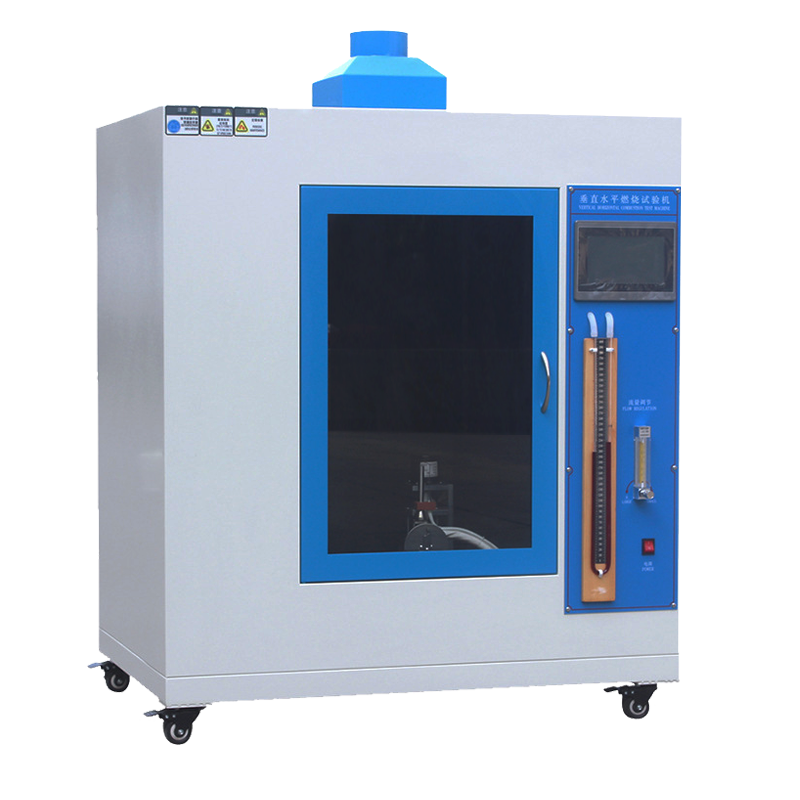 Vertical Combustion Tester, Providing Reliable Testing Results for Research and Development
Vertical Combustion Tester, Providing Reliable Testing Results for Research and Development Vertical Combustion Tester, Features Automatic Data Recording and Analysis
Vertical Combustion Tester, Features Automatic Data Recording and Analysis
Contact Us
Guangdong Derui Testing Equipment Co., Ltd.

